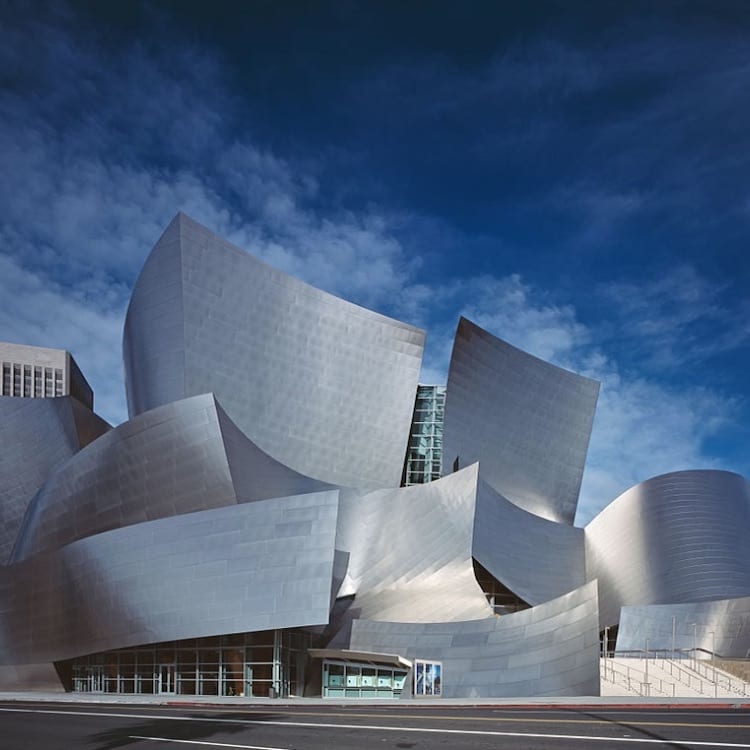We have over 3,000 posts in our vault. Every summer we post from this cache of top features on art, design and architecture, many of which we are sure you have not seen before. Enjoy!
This is less of an interview than a snippet of a larger dialogue from some years ago. I was interviewing Frank Gehry in his Venice office about the Ohr-O’Keefe Museum in Biloxi, Mississippi (begun in 2004 and still not complete, CFile will be visiting that institution’s snail-like process soon). I was in luck: Gehry, a man known for his reticence and distance, was deeply jet-lagged and had became uncharacteristically voluble.
We covered a lot of ground, his troubled relationship with Richard Serra, Antonio Gaudi, George E. Ohr (“I don’t know which of us was copying the other, I think Ohr was copying me”) and his student years as a ceramist and technical assistant to USC’s masterful potter, Glen Lukens (“He paid for me to attend my first architecture symposium, clearly he saw a better architect in me than a ceramist.”)
The discussion moved to Gehry’s ceramic sculpture, A Rose for Lilly, which was the most personal part of the interview. He created it as a tribute to his tough relationship with Walt’s widow, Lillian “Lilly” Disney. It was conceived by Gehry, but always the canny businessman, paid for by her grand and great-grandchildren. One encounters the work in a charming, small park (there are many on the grounds, which also includes an amphitheater) as one ascends to the entrance of the Disney Symphony Hall in Los Angeles. Arguably, after Bilbao, this is one of the architect’s great masterpieces and what is more, it functions superbly.
Lilly Disney was one of those wise women who knew what she did not know; despite her intense dislike of Gehry’s work, she gave him freedom and 50 million dollars to build the Hall. Gehry recalls:
She was a smart women and I was also thinking about how I could get through to her. One day I asked to have tea with her. I arrived with a giant silver bowl filled with three-dozen roses, her favorite flower. I put it down on the coffee table alongside the model of the Hall. I began to explain how the building was a rose and unfolded like petals. I was not pandering, I had always thought of the exterior as a flower, not a rose necessarily, but a flower nonetheless. Halfway through my presentation she interrupted me and said, ‘that building is not a rose, its a big, ugly, industrial building made of metal’.
We talked often and I included many of her suggestions concerning the building into its structure and flow, but not always in the look that she wanted. When it came time to honor her contribution, I came up with a fountain in the shape of a rose, covered in blue and white ceramic shards. It was inspired both by that morning and Lilly’s love of blue and white ceramic vases.
She was an accumulator rather than a collector and connoisseurship did not matter to her. She would buy an important historical work for thousands and then pick up a cheap piece for ten dollars at an airport gift shop. It was all the same to her. We spent $34,000 on two hundred Delft vases from a factory in Holland and carefully smashed them for the project. I felt it worked in capturing a rare and skeptical spirit.
And work it does. The blog, Rancho Reubidoux, offers a virtual walking tour to the fountain and comments, “like a classic blue-and-white Delft teacup, [it] cradles water gently in its hollows. No splashing, spouting or sprays, this fountain is very quiet, very feminine and understated. It sits next to the monumental Hall in an organic counterpoint to the building’s cool sharpness.”
Garth Clark is the Curator and Chief Editor of CFile.

Take Rancho Reubidoux’s Walking Tour
Visit Disney Hall and Its Construction
Read the original post here, and be sure to check out our other reads from the Vault.

It is wonderful that C-file is back!
Thank you
Erika